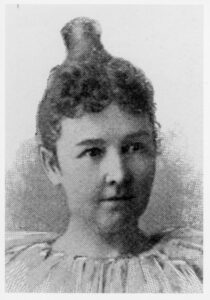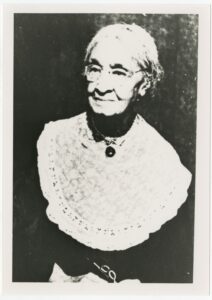Women of Arkansas
Prior to the colonization of the Americas by Europeans, many indigenous (Native) American cultures recognized the political power of women. While men dominated indigenous leadership structures, women often participated or were consulted in political decision-making processes. In general, relationships between indigenous men and women were more equal than in European cultures, indigenous women enjoyed rights that European women did not have, and indigenous gender roles were more fluid than in European societies.
As Europeans continued to colonize new territories in the Americas, they also transferred their understanding of gender relations and laws that regulated the position of men and women in the society. By and large, European women, including first European women and their descendants in North America, had no legal, political, or economic rights even when female monarchs (queens) led some of the greatest powers of Europe. That does not mean, however, that women did not play a part in the political lives of their communities. By engaging in local churches and charities, participating in local economies, or taking responsibility for their children’s education, women always had some impact on local politics, even if they did not have formal political rights.
By the mid-19th century (1800), ongoing efforts to grant political rights to women – including the right to vote – became better organized and more visible across the United States. In Arkansas, the first serious attempt to grant women the right to vote emerged shortly after the Civil War, when Miles Ledford Langley of Arkadelphia proposed at the 1868 Arkansas Constitutional Convention that “all citizens 21 years of age, who can read and write the English language” should be eligible to. While this proposal was rejected, the fight for women’s political rights did not cease. Women’s rights organizations mushroomed across the state and while they fought for women to be recognized as equal to men in all aspects of life, their agenda focused particularly on one goal: suffrage, or voting rights for women. They implemented various strategies to achieve their goal. They published and distributed suffrage newspapers and pamphlets, organized marches, parades, and rallies, and sent petitions to local and national legislatures that demanded voting rights for women. In 1917, all these efforts resulted in Arkansas women gaining the right to vote in primary elections.
In 1919, Congress passed the federal women’s suffrage amendment, which Arkansas ratified only a month later, becoming the twelfth state to ratify the Nineteenth Amendment. In this activity, you will examine three photos that document crucial moments in Arkansas women’s rise to political power.
For centuries, pregnant people all over the world relied on midwives to assist them during labor. Midwives typically did not attend any specialized schools but learned their skills from other women who worked as midwives (this process of learning a profession is known as an apprenticeship). Nearly all women had babies at home and midwives were their most trusted aides. Not only did midwives support individuals during labor, but they also helped new mothers care for their newborns. Sometimes they even did household chores for several days after labor to give new mothers time to recover.
In the United States, these centuries-old practices began to change dramatically in the 19th century. Already at the beginning of the 20th century, doctors, who were almost always men, were replacing midwives, who were almost always women. At the same time, a new type of midwives known as nurse-midwives emerged. Those were women who received formal midwifery training, usually in specialized midwifery schools, and who quickly replaced the older type of midwives known now as traditional midwives. However, those changes did not affect all Americans in the same way. Not all communities had equal access to healthcare facilities and trained doctors and nurses. Furthermore, having a baby with the assistance of a doctor was more expensive than having a baby with the assistance of a midwife so poor women continued to rely on traditional midwives. It was also much more challenging to find a formally trained doctor or nurse-midwife in remote rural areas, particularly in the South.
In some African American communities, traditional midwives continued to serve a critical role of trusted healthcare providers all the way into the second half of the 20th century (1900s). Particularly working class and poor black women, especially in rural areas and in the South, had limited access to formally trained doctors and nurses. Under those circumstances, traditional midwives provided affordable and reliable healthcare. In this activity, you will examine three photos of African American midwives who offered critical healthcare services in their communities.
A Trailblazer is a person who leads the way in any new field or endeavor; someone who is among the firsts in a particular field. Another related word is pioneer.
In this activity, you will look at ten photos of women who were trailblazers in their professions. They all chose professions that were at the time considered men’s jobs and that many Americans, both men and women, considered inappropriate for women. These photos will help us learn how expectations for professional women changed over time and how some of them stayed the same.
A Trailblazer is a person who leads the way in any new field or endeavor; someone who is among the firsts in a particular field. Another related word is pioneer. In this activity, you will explore the contributions of five Arkansas women who were trailblazers in their professions. All of them entered male-dominated professions at the time when many Americans, both men and women, considered such decisions to be inappropriate for women. All these women defied social expectations related to their gender. Three of them also defied social expectations related to their race as they entered professions not only considered more appropriate for men but also dominated mostly by white men.
You will examine five photos that will help us learn how expectations for professional women changed over time and how some of them stayed the same.
In this activity, you will look at six photos that show how women and girls dressed in the past. These photos will help us learn what kind of clothes different groups of women wore in the past, how women’s clothes changed over time, and how clothes that we wear today differ from clothes that women and girls wore in the past.






